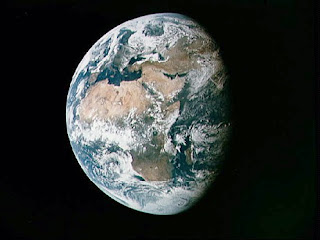Houston, Tranquility Base here. The Eagle has landed!
Space flight dominated my youth. Every rocket launch in the 1960s got wall-to-wall television coverage on every channel. Astronauts like John Glenn, Alan Shepard and Neil Armstrong were as well-known as movie stars and politicians of the day. Can you even name one current astronaut?
It is hard for me to believe that the 40th anniversary of the first human footsteps on the Moon is just two weeks from today. One of the most famous quotes in American history was spoken live to the world by Neil Armstrong as he stepped onto the lunar surface at 9:56 pm EST, Sunday, July 20, 1969: “one small step for man, one giant leap for mankind.”
Today’s cell phones probably have more computing power than the computers that assisted in that flight. In fact, the actually landing was flown manually because the auto-pilot computer overloaded during the last few minutes of landing and was aiming for a boulder field. The lunar module had only 30 seconds of fuel left when it landed.
The primary goal of that flight was to send a human to the moon and back safely to earth. Far more was achieved, both in science and in psychology. This adventure renewed the collective spirit of our country and began to heal us from the divides of the tumultuous previous year.
There has been talk in recent years of a return to the moon. Lunar mission capabilities are designed into the replacement vehicle for the soon-to-be discontinued space shuttle. But the sense of adventure is not there. For much of Congress and the American citizenry, space flight is just another budget line item to be debated and cut. For many fifty-something boomers, it is both a fond memory from youth and an exciting goal for the future.
Videos:
Landing
Moon Walk
Additional information:
Apollo 11 Timeline
Apollo 11 Highlights
Apollo 11 First Steps
It is hard for me to believe that the 40th anniversary of the first human footsteps on the Moon is just two weeks from today. One of the most famous quotes in American history was spoken live to the world by Neil Armstrong as he stepped onto the lunar surface at 9:56 pm EST, Sunday, July 20, 1969: “one small step for man, one giant leap for mankind.”
Earth view photographed by Apollo 11 astronauts
Today’s cell phones probably have more computing power than the computers that assisted in that flight. In fact, the actually landing was flown manually because the auto-pilot computer overloaded during the last few minutes of landing and was aiming for a boulder field. The lunar module had only 30 seconds of fuel left when it landed.
The primary goal of that flight was to send a human to the moon and back safely to earth. Far more was achieved, both in science and in psychology. This adventure renewed the collective spirit of our country and began to heal us from the divides of the tumultuous previous year.
There has been talk in recent years of a return to the moon. Lunar mission capabilities are designed into the replacement vehicle for the soon-to-be discontinued space shuttle. But the sense of adventure is not there. For much of Congress and the American citizenry, space flight is just another budget line item to be debated and cut. For many fifty-something boomers, it is both a fond memory from youth and an exciting goal for the future.
Videos:
Landing
Moon Walk
Additional information:
Apollo 11 Timeline
Apollo 11 Highlights
Apollo 11 First Steps

Comments